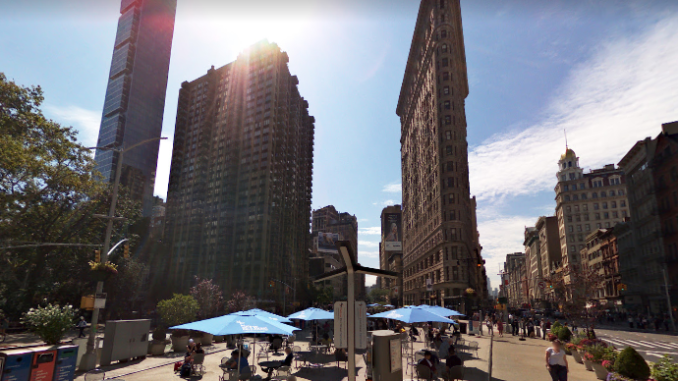
The Flatiron Building, formerly known as the Fuller Building, is a 22 storied triangular landmark steel-framed building situated in the borough of Manhattan at 175 Fifth Avenue in NYC. After the construction completed in 1902, the Flatiron Building, with its 20 floors was one of the tallest buildings in New York City. The building was built on a triangular lot created by Broadway, Fifth Avenue, and East 22nd Street; the 27m/87-feet tall back end of the skyscraper is located towards the East 22nd Street side.
Even though the Flatiron Building was not the tallest one in NYC, with the tallest one being the 1899 constructed 29 storied Park Row Building, its unique design and architecture made it one of the most distinct looking steel-framed skyscrapers of that era. Most of the skyscrapers consisted of high towers that jut out from block-like heavy bases, but the Flatiron tower rose directly towards the sky from the street below, creating an instant and prominent contrast against other nearby structures.
It is said that the design of the tower resembles a cast-iron apparels iron and hence the name of the building. However, others have pointed out that the triangular area at the site was called ‘flat iron’ much before the construction of the iconic tower.
The Flatiron Building has often been referred to as one of the most iconic buildings in the world and an exemplary symbol of NYC. In 1965, it was designated an NYC landmark; in 1979, it found a place in the National Register of Historic Places; and in 1989, it was deemed a National Historic Landmark.

Flatiron Building – History and Architecture
The site of the Flatiron Building was originally purchased for $30,000 by Amos Eno in 1857, who constructed some buildings around it. After Eno’s death in 1899, the site was put up for sale and subsequently purchased by Amos’ son, William Eno. He then sold it to Samuel and Mott Newhouse, who then sold it to ‘Cumberland Realty Company’ founded by Harry S. Black. Black was the CEO of the Fuller Company, a general contracting firm that specialized in construction of skyscrapers.
Black wanted to a build a new company headquarters at the location and recruited Daniel Burnham, an architect from Chicago, to design it. The skyscraper was to be called ‘Fuller Building’ but local people kept on referring to it as ‘The Flatiron. That name was later made official.
The architecture of the Flatiron consists of all aspects of the Chicago school. It has classical Greek column-work and the façade is made up of limestone at the ground level and changes to glazed terra-cotta tiling as the tower moves up. The stonework features a Beaux-Arts design style with Italian and French Renaissance influences as well as other trends. The building features 3 three distinctive horizontal motifs, using gargoyles, fleur-de-lis, and eagles, surrounded by other embellishments. As the floors keep rising, the building gets divided into a base, capital, and shaft. It has the precise shape of a right triangle and measures just 6 feet near the narrow side. At the apex, the triangular building is just 2m/6.5 feet wide. When the tower is seen from above, this pointy end features an around 25 degree acute angle. The structure is 285 feet tall and has 22 floors.
In 1892, the building codes for New York City were changed to remove the need for use of masonry for purposes of fireproofing. This was a boon for the makers of the Flatiron as they could now go for construction of a steel-skeleton building. The steel frame would make construction of a 22 storied building much easier as compared to the construction techniques available during that period. The Fuller Company was very familiar with the method of using steel framework for construction of skyscrapers.
‘The Prow’ or the ‘cowcatcher’ section of the building present on its front end was not a part of the initial design by Burnham. It was added later on after Black insisted on it so as to make the most use of the land available as well as make some income to assist defray the construction costs. The penthouse was also not a part of the original design. It was built after the completion of the entire tower and was meant to be used as studios for artists. After it was built, it was immediately rented out to Louis Fancher and other artists.
After the construction started, it continued at a rapid pace. The steel frames were pre-cut immaculately and precisely, thereby allowing the skeleton to be put up at the rate of 1 floor per week. The construction of the steel structure was completed by Feb 1902 and nearly half the tower was enclosed in terra-cotta tiling by middle of May. The construction finished in June 1902, one year after it began.
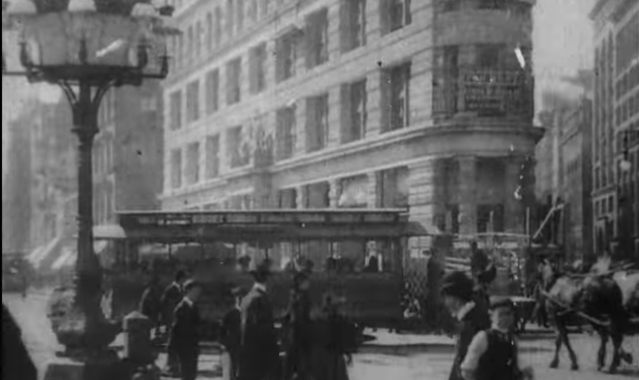
The response by public and critics: The general public was enthusiastic about the new skyscraper, but the critical reactions not that positive.
The most widespread criticism of the Flatiron building was initially called ‘Burnham’s Folly.’ The design of the building which offered a characteristic appearance of a freestanding tower garnered skepticism about whether the structure was stable enough to keep standing and survive. Critics pointed out that the combination of the height and triangular shape would cause the tower to collapse. There was also increased attention on the potentially hazardous wind-tunnel effect generated by the triangular structure located at the junction of two large streets. It may however be noted that even though the wind was strong at the junction, the frame of the tower was designed to sustain 4 times the normal wind speeds so as to maintain stability and retain the unique triangular shape of the tower.
Despite the adverse critical response, crowds thronged to the site to check out the tower after its construction was complete. It was frequently featured in paintings, photographs, and postcards. Impressionist Childe Hassam has done beautiful paintings of the Flatiron building, while some really memorable photos have been captured by photographers Alfred Stieglitz, Alvin Langdon Coburn, and Edward Steichen.
First tenants and change of ownership: The Fuller Company made their headquarters in the 19th floor of the tower. They relocated in 1929 to the 57th Street Fuller Building. The first tenants of the Flatiron included magazine publishers, small business, the Bohemian Guides Society, the Imperial Russian Consulate, and other companies. United Cigar Stores leased the ‘cowcatcher’ retail space. The huge cellar, which featured vaults as deep as 21 feet, was home to the Flatiron restaurant. A club/restaurant with performances by a Jazz band was started in the basement in 1911.
Black sold the Flatiron Building in October 1925 to a Lewis Rosenbaum syndicate for $2 million. After the syndicate defaulted, their lender, Equitable Life Assurance Company, failed to auction the building and became the owners. After some modernization works, including replacement of the birdcage cast-iron elevators, it was put up for rent and got fully leased by mid 1940s.
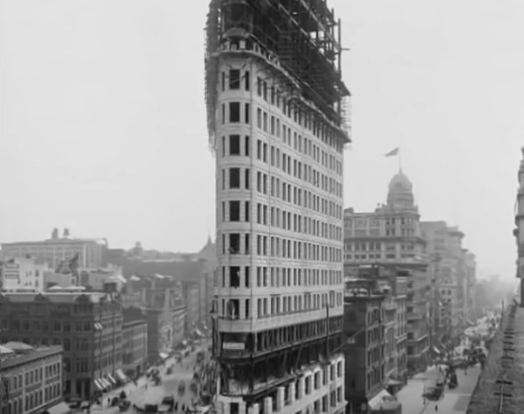
In 1946, Harry Helmsley headed Flatiron Associates acquired the Flatiron Building from Equitable. Renovation and repairs required the permission of all partners/tenants in the building and hence they could not be carried out. Hence, the building’s condition declined during this time. In 1997, real estate firm Newmark Knight-Frank purchased the 52 percent share held by investors in the building. The new owners made numerous renovations such as replacement of the hydraulic elevators with electric ones, etc. The Sorgente Group purchased a majority holding in the Flatiron building in 2009. They have plans to convert it into a luxury hotel, but that would be possible only after the leases of the present tenants expire in 2019.
Flatiron Building – Inside
The interiors of the Flatiron Building are famous for their unusually-shaped offices, featuring walls that pave across at an angle on the path towards the most well-known point of the tower. Such ‘point’ office spaces are the most sought after as they offer spectacular northern sights that directly look upon the Empire State Building, another iconic NYC landmark.
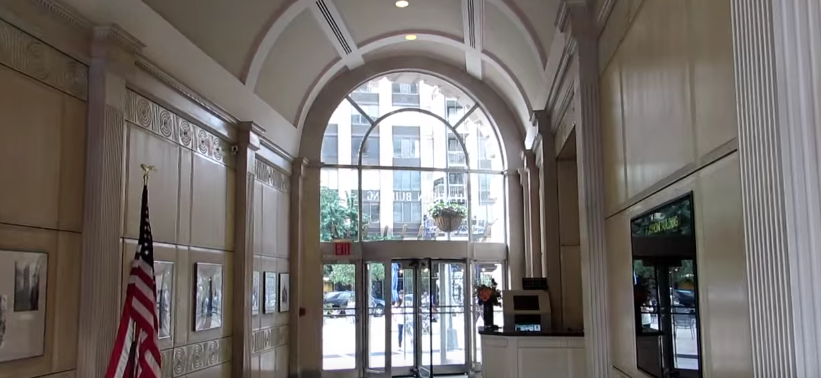
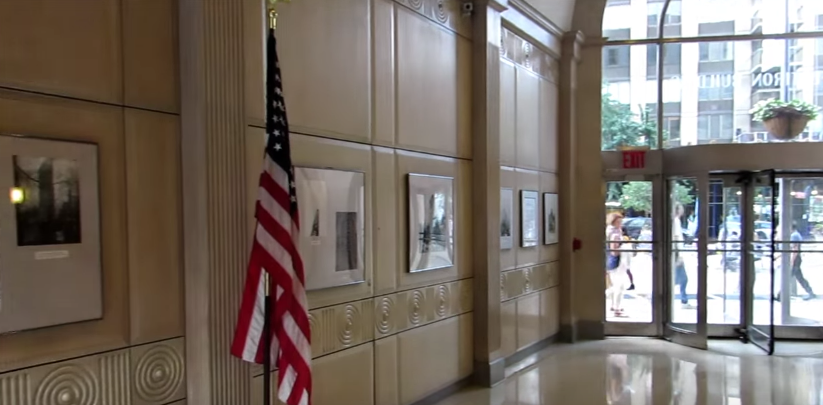
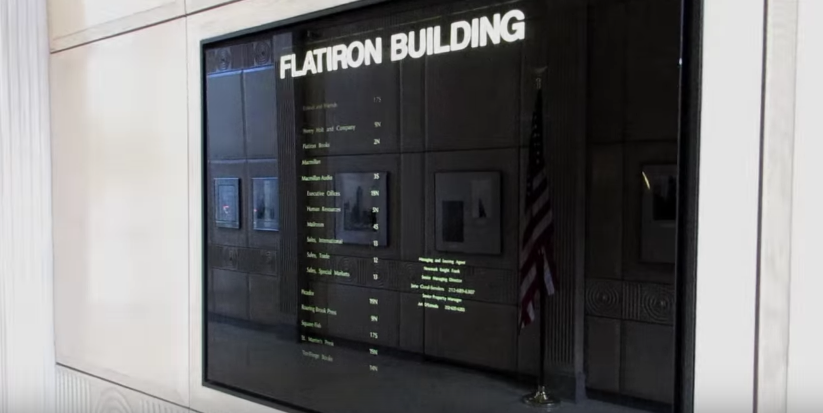


Some of the peculiar aspects of the tower’s interiors include placement of bathrooms for females and males on alternating floors; the women’s restrooms are available on odd floors while men’s restrooms are on even ones. Also, in order to reach the 21st floor of the building, one has to get down on the 20th floor and take another elevator. It may be noted that the 21st floor was constructed in 1905, 3 years after completion of the tower. The bottom edges of the windows on the 21st floor are at the height of one’s chest.
The ‘cowcatcher’ section has regular installations sponsored by Sprint. ‘Nighthawks’ of Edward Hopper was recreated at this place in 2013.
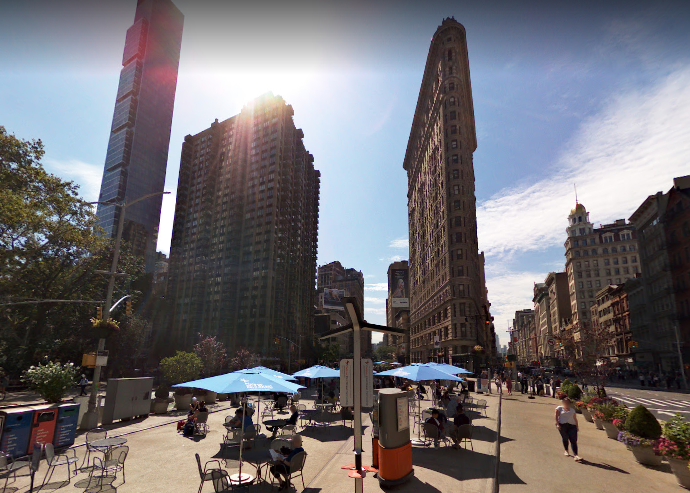
Flatiron Building – Map and Address
175 5th Ave, At 23rd St., New York City, NY 10010-7703
Contact – +1 212-477-0947
Can you tour the inside of Flatiron Building?
Yes, you can do as a part of a city tour or food tasting tour.


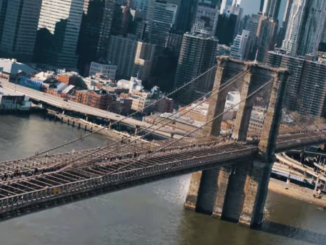
Be the first to comment